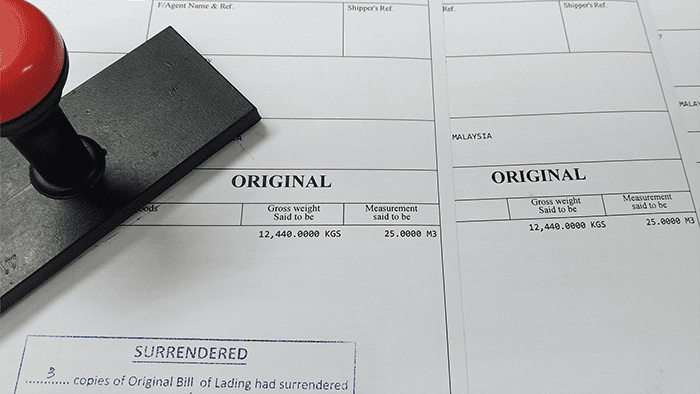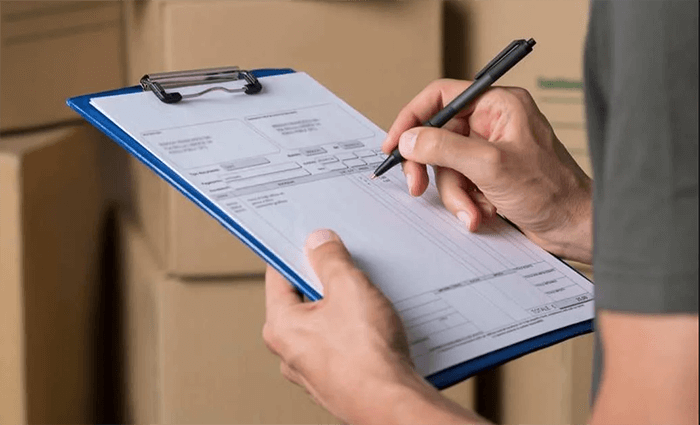Table of Contents
Basic concept
Bill of lading: refers to the document used to prove the contract of carriage of goods by sea and the goods have been received or loaded by the carrier, and the carrier guarantees the delivery of the goods. Article 71 of “Maritime Law”) referred to as B/L, in foreign trade, a certificate issued to the consignor (either the exporter or the freight forwarder) by the transportation department when carrying the goods.
The consignee picks up the goods with the bill of lading to the transportation department of the freight destination (if the consignee has a small order, he needs to exchange the master bill from the domestic freight forwarder). The bill of lading must be signed by the carrier or the ship before it becomes effective. The D/O form is one of the valid shipping documents for the declaration of goods by sea to customs.
The ocean bill of lading, referred to as the bill of lading, is one of the most important documents in international settlement. The Hamburg Rules define a bill of lading as A bill of lading is a document certifying the contract of carriage by sea and the receipt or loading of the goods by the carrier, whereby the carrier undertakes to deliver the goods. A document stating that the goods will be delivered as instructed by the nominated person, or as instructed or delivered to the bearer, constitutes such an undertaking.
In July 1993, Article 71 of the “Maritime Law of the People’s Republic of China” came into effect on the 1st: “The bill of lading refers to a contract used to prove the contract of carriage of goods by sea and to prove that the goods have been received or shipped by the carrier. The carrier, carrier guarantees Delivery of the Goods. The terms of delivery of the Goods, whether as directed by the Instructor or by the holder of the Bill of Lading, constitute the carrier’s guarantee of delivery of the Goods.
Function
A bill of lading has the following three main functions:
Cargo Receipt: For the shipper who entrusts the cargo to the carrier for transportation, the bill of lading has the function of cargo receipt.
Document of title: For the holder who has legally obtained the bill of lading, the bill of lading has the function of document of title.
Documents proving the establishment of the contract: The terms printed on the bill of lading stipulate the rights and obligations between the carrier and the shipper, and the bill of lading is also a legally recognized basis for dealing with the transportation of related goods, so it is often regarded as the proof of the contract of carriage.
Related persons
The main parties of the bill of lading are the two parties who sign the contract of carriage: the shipper and the carrier. The shipper is the cargo, and the carrier is the ship. Other related parties include the consignee and the notified party. The consignee is usually the buyer in the contract for the sale of goods, the bill of lading is forwarded by the carrier to the consignee through the consignor, and the consignee picks up the goods with the bill of lading. the parties concerned with the right of goods. If the bill of lading is transferred, there will be persons related to the bill of lading such as the assignee and the holder.
Liquidity
A bill of lading, as a document of title, can be transferred as long as certain conditions are met. There are two transfer methods: blank endorsement and registered endorsement.
Main content
The bill of lading number (B/L No):
Generally listed in the upper right corner of the bill of lading, to facilitate work contact and inspection. When the consignor sends the Shipment Advice to the consignee, the name of the ship and the number of the bill of lading should also be listed.
Shipper:
Fill in the name and address of the shipper, and the code if necessary. The shipper is generally the beneficiary (exporter) in the letter of credit.
Consignee (Consignee):
Fill in the name and address of the consignee, if necessary, fill in the telephone, fax or code. If a named bill of lading is required, this column can be filled in with the name of the specific consignee; if it is an instruction bill of lading, fill in “To order” or “To order of ×××”.
Notify party:
This is the recipient of the arrival notice sent by the shipping company when the goods arrive at the destination port, sometimes the importer. For the bill of lading under the letter of credit, if the letter of credit has specific provisions on the party notifying the bill of lading, it must be filled out in strict accordance with the requirements of the letter of credit. If it is a named bill of lading or a bill of lading instructed by the consignee, and the consignee has a detailed address, this column can be omitted.
If it is a blank instruction bill of lading or the shipper’s instruction bill of lading, this column must be filled with the name and full address of the notifying party, otherwise the ship will not be able to contact the consignee, and the consignee will not be able to declare at customs and pick up the goods in time. The notifying party is generally the intended consignee or the consignee’s agent.

Name of Vessel:
Fill in the name of the vessel and the voyage of the cargo. If the bill of lading has been shipped, the name of the ship must be filled in; if it is a bill of lading to be shipped, the name of the ship should be recorded after the actual loading of the goods.
Place of Receipt:
This column is filled in under the multimodal transportation mode, indicating the place where the carrier receives the goods. The transportation terms can be: door-door, door-yard, door-station.
Port of Loading:
This column should fill in the specific name of the actual port of loading.
Port of Discharge:
This column should fill in the specific name of the port where the goods were actually unloaded. In the case of transshipment, the port of unloading on the first-way bill of lading shall be filled with the transshipment port, and the consignee shall be filled with the shipping company of the second-way; , if the through B/L is issued by the first shipping company, the port of discharge can fill in the final port of destination, and the first and second ship names are listed on the bill of lading.
If it is transshipped through a certain port, the words “via XX” should be displayed. When filling in this column, pay attention to the port of the same name. If it is a selected port bill of lading, please indicate it in this column.
Place of Delivery:
This column is filled in under the mode of multimodal transportation, indicating the place where the carrier delivers the goods. The transportation terms can be: door-door, field-door, station-door.
Description of Goods:
Under the letter of credit, the name of the goods must be consistent with the name of the goods specified in the letter of credit.
Number and kind of Package:
Fill in this column according to the actual packaging of the box. In the case of full container cargo transportation, this column usually fills in the number and model of the container (eg: 1×20FT DC); if it is in the case of LCL cargo transportation, this column should fill in the number of goods (eg: 10 Cases machinery).
Shipping Marks:
If there are stipulations in the letter of credit, it must be filled in according to the regulations; otherwise, it can be filled in according to the shipping marks on the invoice.

Gross Weight:
Measurement: If there are provisions in the letter of credit, it must be filled in according to the provisions; otherwise, the gross weight of the goods is generally listed in kilograms, and the volume of the goods is listed in cubic meters.
Freight and Charges:
generally Freight Prepaid or Freight Collect. Such as CIF or CFR exports, generally fill in the words “freight prepaid”, do not leave out, otherwise the consignee will pick up the goods late or fail to pick up the goods due to the unclear freight. If it is FOB export, the freight can be made with the words “Freight Collect”, unless the consignee entrusts the shipper to pay the freight in advance.
Temperature Control Instructions:
In this column, fill in the temperature required during the transportation of the refrigerator, and try to avoid indicating the specific temperature.
Place and date of issue, number of original B(s)/L:
The place where the bill of lading is issued is in principle the place of loading, usually at the port of loading or where the cargo is concentrated issued. The date of issuance of the bill of lading should be the date on which the goods listed on the bill of lading were actually loaded on board, and should also be consistent with the date issued by the chief mate on the delivery note. If settlement is made under a documentary credit, the date issued on the bill of lading must be the same as or prior to the final shipment date required by the credit or contract.
If the seller estimates that the goods cannot be shipped within the time limit specified in the letter of credit, it should notify the buyer as soon as possible and request to amend the letter of credit, and should not use fraudulent acts such as “backdated bill of lading” and “advance bill of lading” to obtain payment for the goods. The number of copies of the bill of lading is generally issued according to the requirements of the letter of credit, such as “Full Set of”, which is generally understood as the original bill of lading in triplicate, each of which has the same effect. The number of copies of the bill of lading depends on the needs of the shipper.
Signature or seal of the carrier or master, or a person authorized by him.
Samples of B/L




